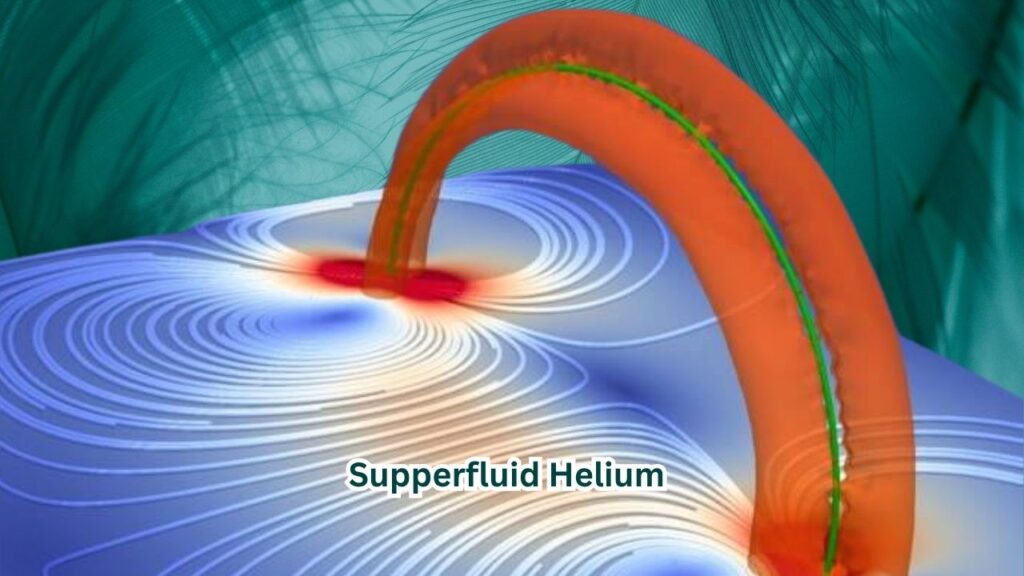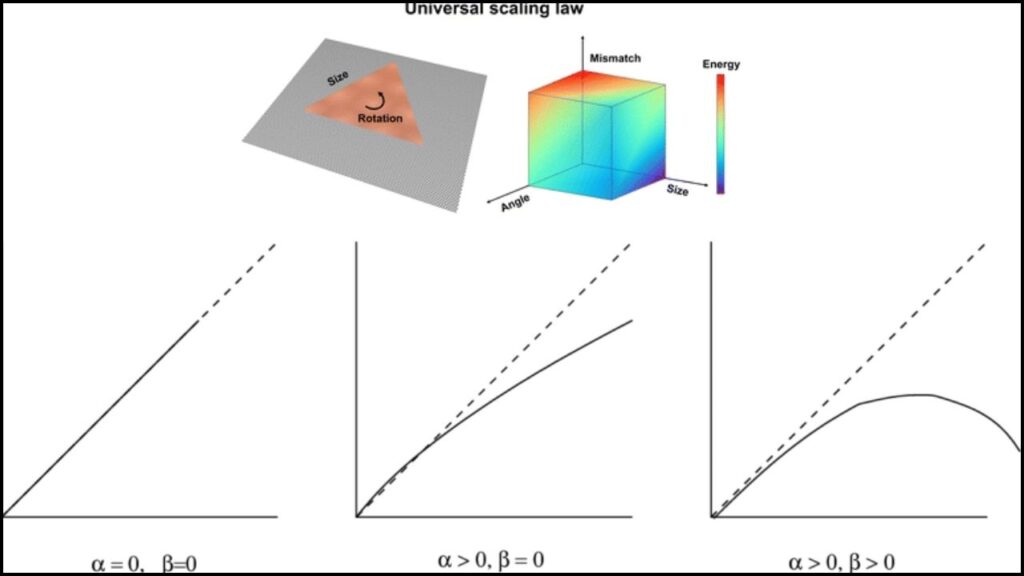Researchers at the FAMU–FSU College of Engineering—in collaboration with international partners and the National High Magnetic Field Laboratory—have discovered a universal law of quantum vortex reconnection, a breakthrough that could reshape our understanding of turbulence in both quantum and classical fluids.

In superfluid helium—a form of liquid that flows without friction—tiny whirlpools known as quantum vortices appear when the liquid is cooled below the lambda point (2.17 K). These vortices can cross paths, break apart, and reconnect, releasing energy in the process. Until now, scientists believed these reconnection events were time-symmetric: the way vortices approach and separate would mirror each other. The new study reveals something different—and profound.
Researchers At FAMU–FSU Reveal Universal Law Of Quantum Vortex Dynamics
| Aspect | Details |
|---|---|
| Institution | FAMU–FSU Engineering, National High Magnetic Field Laboratory, Newcastle University et al. |
| Discovery | Universal time-irreversible scaling law for quantum vortex reconnection |
| Physical Insight | Vortices separate faster than they merge |
| Experimental Method | Laser-traced deuterium particles tracked via high-speed imaging |
| Scaling Law | Separation distance scales with sqrt(time), but different prefactors pre- vs post-reconnection |
| Temperature Dependence | Consistent asymmetry observed across varied temperatures (~1.65–1.9 K) |
| Energy Implications | Each reconnection injects energy into the normal fluid—affecting turbulence |
| Publication | Published in Proceedings of the National Academy of Sciences, with complementary arXiv preprint |
| Lead Authors & Affiliations | Wei Guo, Yiming Xing, Yousef Alihosseini (FAMU–FSU); plus UK, France, Italy |
| Official Coverage | PNAS Journal, FSU News, arXiv |
The FAMU–FSU study uncovers a universal law of quantum vortex reconnection, revealing that vortices always separate faster than they converge, due to a real, time-directed energy transfer. Confirmed across varied temperatures and fluid types—from frictionless quantum superfluids to everyday air and water—this finding forces a rethink of how we model turbulence, design advanced engineering systems, and approach mesoscale physics.
By systematically revealing time asymmetry in vortex dynamics and quantifying the underlying scaling law, the research not only advances theoretical physics but provides a framework for practical applications—from engineering efficiency to quantum device stability.
1. What Are Quantum Vortices?
At its core, superfluid helium-4 becomes a unique state of matter, blending normal fluid and frictionless flow components below 2.17 K—its “lambda point”. In this state, quantized vortices—microscopically thin tubes of swirling flow—form. These vortices are topological defects carrying discrete amounts of circulation determined by quantum mechanics.

Think of them as microscopic tornadoes in an otherwise calm, frictionless liquid. When two of these vortices cross, they can reconnect, exchanging strands. Historically, reconnection was thought to be a reversible process: what goes in, comes out identically. But the new study challenges that assumption.
2. The Universal Scaling Law

2.1 √Time Behavior
Earlier research confirmed that, in both quantum and classical fluids, the distance (d) between vortices near reconnection follows d ∝ √|t – t₀|, where t₀ marks the reconnection moment.
2.2 Asymmetry: Different Prefactors
New experiments and simulations show the prefactors for this √‑time law differ before and after reconnection—that is, the rate of approach (pre‑event) doesn’t mirror the rate of separation (post‑event). Notably:
- The separation phase is consistently faster than the approach.
- This asymmetry holds across varied temperatures (e.g., 1.65 K to 1.9 K).
- It signals a fundamental irreversible process, breaking expected time symmetry.
2.3 Energy Injection & Turbulence
Detailed simulations show each reconnection event injects energy into the viscous normal component of superfluid helium—a key mechanism for sustaining turbulence at low temperatures.
These sudden bursts of energy help explain how turbulence continues in systems that otherwise lack friction—a surprise that challenges existing fluid dynamics models.
3. How the Experiments Worked
3.1 Tracer Visualization
Researchers injected submicron frozen deuterium particles into the superfluid. These tracers become anchored in vortex cores and are visible under laser-sheet illumination .
3.2 High-Speed Imaging
Using fast, high-resolution cameras, the team recorded vortex interactions at temperatures around 1.65–1.9 K, under quiet conditions to capture nearly straight vortex lines .
3.3 Data Analysis & Simulation
- Extracted the minimum separation distance over time.
- Fitted data to the √-time model with distinct fitting factors pre- and post-event.
- Simultaneously ran numerical simulations to validate experimental outcomes.
The results matched strongly, reinforcing the conclusion that reconnection is universally asymmetric—and not just in superfluids, but also classical fluids.
4. Broader Significance & Applications
A. Turbulence Theory Redefined
By uncovering time‑irreversibility, the study challenges classical turbulence theories (e.g., Kolmogorov cascades). Energy transfer is not symmetric with scale, requiring updated models—especially in systems with quantum effects .
B. Engineering & Fluid Mechanics
- Aerospace and turbine engineers rely on vortex behavior for lift, lift-induced drag, and flow separation control. Incorporating asymmetry could optimize designs.
- Climate and weather predictions might benefit from refined turbulence models encompassing both classical and quantum scaling.
C. Quantum Technologies
- In quantum computing and superconductivity, controlling energy flow at microscopic scales is vital. Understanding reconnection dynamics could enhance stability and performance of quantum devices.
- Insights might inform neutron star research, where quantum vortices under extreme conditions drive astrophysical phenomena.
5. Detailed Guide to Reproducing This Study
- Setup superfluid helium sample
- Cool liquid helium below 2.17 K to ensure superfluid phase.
- Maintain stable temperature (1.65–1.9 K) to observe straight vortex lines.
- Inject tracer particles
- Use frozen deuterium or hydrogen particles (~submicron).
- Ensure even dispersal within the chamber.
- Illuminate and record
- Deploy laser‐sheet illumination to highlight particles.
- Calibrate high-speed cameras for high spatial and temporal resolution.
- Track vortex events
- Identify approach, reconnection, and separation phases.
- Measure the minimum distance vs time.
- Analyze data
- Fit distance vs time curves to √|t–t₀| scaling.
- Extract prefactors (pre‑ and post‑reconnection) and verify asymmetry.
- Run simulations
- Use Gross–Pitaevskii and two-fluid models to simulate vortex dynamics.
- Validate experimental observations and explore energy flux.
- Interpret results
- Confirm universal asymmetric behavior.
- Analyze energy injection into the normal fluid component.
Integrated Quantum Photonics Gains Traction as Scalable Quantum Path
Berkeley Lab Introduces Laser‑Patterned Color‑Center Qubits in Silicon
FAQs About Researchers At FAMU–FSU Reveal Universal Law Of Quantum Vortex Dynamics
Q1: What exactly is time‑irreversibility?
It means physical processes don’t mirror if run backward—here, vortices separate faster than they approached. It’s a sign of energy transfer and dissipation, not perfectly reversible motion.
Q2: Does this only happen in quantum fluids?
No—similar asymmetric reconnection has been observed in classical viscous fluids, implying a universal principle across fluid types.
Q3: What role do temperature changes play?
Experiments at 1.65–1.9 K show consistent asymmetry across this range . Higher temperatures increase normal fluid viscosity, affecting energy dissipation but not the core law.
Q4: How does this impact engineering?
Asymmetric reconnection influences vortex stability, which affects lift, drag, mixing, and flow separation in engineering systems from jet engines to wind turbines.






